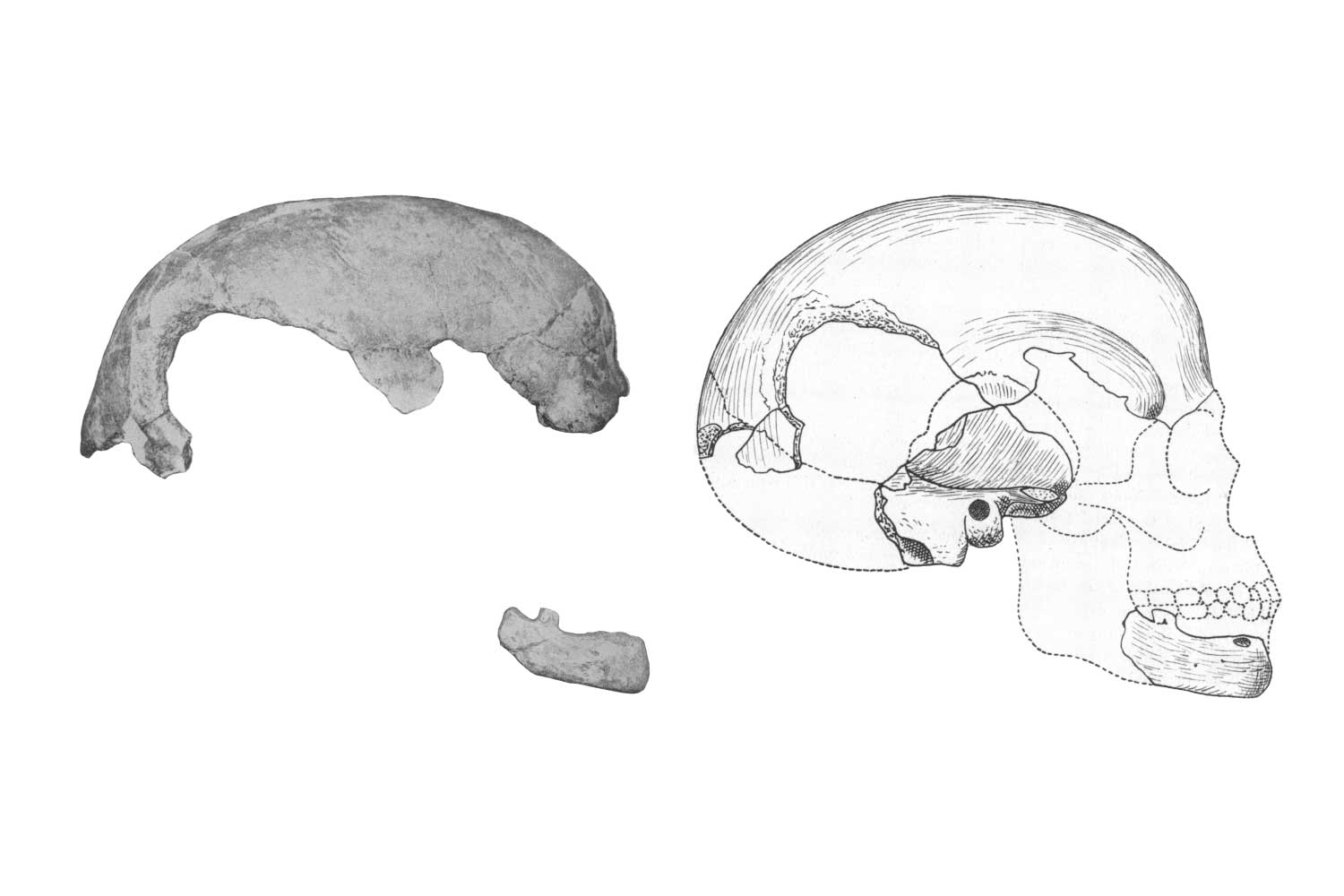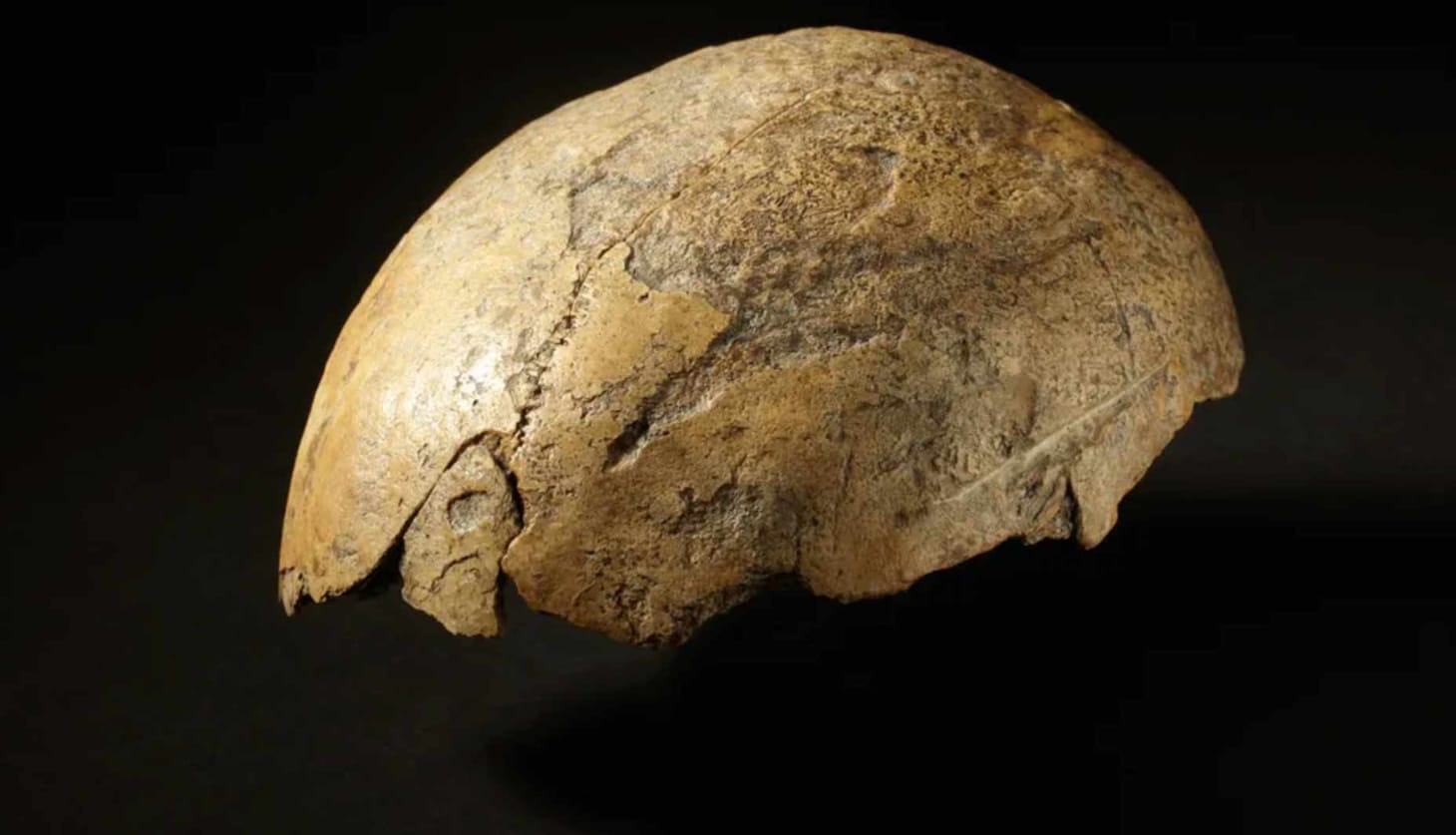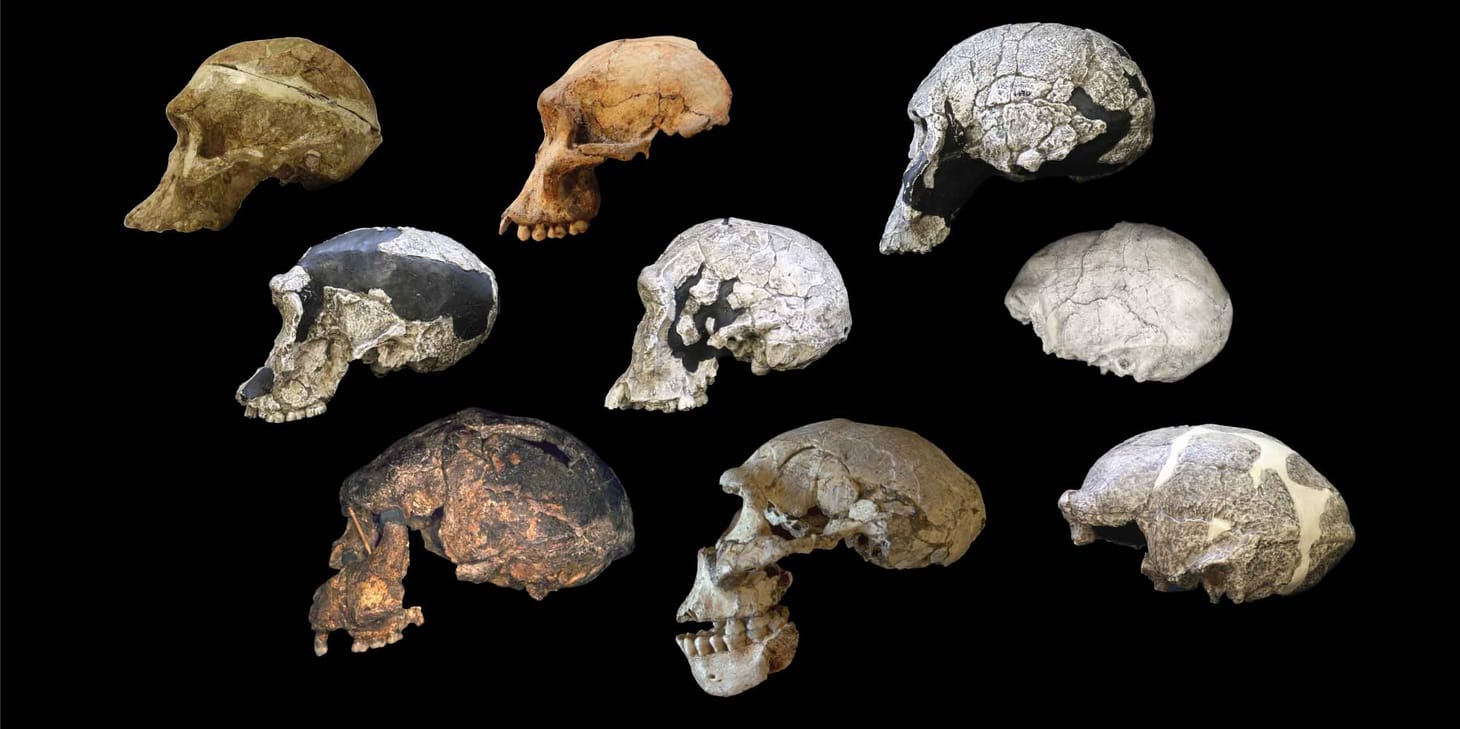Return of the “amazing” Boskops
Bringing some scientific reality to an excerpt from a book that tries to revive the myth of an ancient, large-brained race of humans.

Note: This post was written in 2010 following my reading of the book excerpt. The historical information in the post remains accurate. If you've arrived to find out the current scientific understanding of the Boskop skull, I recommend the earlier post, “The ‘amazing’ Boskops”. Discussion of ideas from the past about human races requires using terms that today may have offensive meanings to many people. These terms are quoted here in order to make clear how they originated as concepts in the history of anthropology.
Oh, good grief!
I have had an unusual number of hits the past few days, so I went through my logs looking for the source. Turns out people are reading my 2008 review of the “Boskops race” (“The ‘amazing’ Boskops”).
Over 10,000 people have read that post since the New Year began. That post has always gotten a recurring readership, because of a 2008 book by Gary Lynch and Richard Granger, Big Brain: The Origins and Future of Human Intelligence.
Evidently the book is about to come out in paperback. And Discover magazine, which gave the book a fairly positive review on its release, has now reprinted an excerpt detailing the wondrous features of the Boskops race (“What Happened to the Hominids Who Were Smarter Than Us?”). Someone copied the whole thing to Richard Dawkins’ website. And people reading the excerpt are trying to find out more about this fantastic story, and finding my blog.
Well, to all those seeking the light of paleoanthropology, welcome!
To those who have linked the post: I want to let you all know that your links have directed more than 10,000 people to find some actual true information about the “Boskop race”. Good work out there!
What can I do to update people, now that this story is spreading once again? My original post gives a short history, but was not based on a real review of the book. I was just trying to get some accurate information out there.
Now I have read the excerpt, and much (but not all) of the Boskop-related text in the book (courtesy of Amazon).
It’s worse than I feared. The excerpt actually presents 1920’s-era anthropology as if it were the state of our knowledge about Boskop and the “Boskop race” today. I have not found any passages in the book or chapter notes that contradict the excerpt’s portrayal. I cannot find references or citations of post-1940 research on skeletal remains or archaeology from southern Africa. There’s no hint of what happened after archaeologists began to use radiocarbon dating, nor do we hear even the identity of any specimens, except for the original (and fragmented) Boskop skull itself.
How can this be? From the book’s notes, it appears that the authors didn’t find any information on these topics:
One of the oddities in the Boskop story is the disconnect between the rich trove of references from the early twentieth century, and the paucity of references after that time (Lynch and Granger 2008: 218).
I find that very sad, because there is a much richer trove of references after 1958. Archaeologists have developed a deep understanding of the chronology and material culture of LSA and later hunter-gatherers around the Cape and northward. Skeletal biologists have studied the health status, demography, and morphology of Holocene and earlier peoples. Some have even examined the endocranial volumes of southern African skeletal samples, and have tested the hypothesis of trends in brain size over time.
All this work shows a very different picture than that sketched by Lynch and Granger.
I’m going to be very measured, because while I am often snarky, I rarely come straight out and write that something is bunk. The portrayal of “Boskops” in the Discover excerpt is so out of line with anthropology of the last forty years, that I am amazed the magazine printed it. I am unaware of any credible biological anthropologist or archaeologist who would confirm their description of the “Boskopoids,” except as an obsolete category from the history of anthropology.
[UPDATE (2010-01-04): I have heard from Amos Zeeberg, the Web editor at Discover. He writes that the excerpt was intended to run identified as a “controversial idea, but that context didn’t come across as intended.” The web page has been changed to make that context clear, and to link to my discussion here. I think it’s great that he responded so quickly, although I think that this case is not controversial, it’s non-science. ]
Besides that, the authors make several questionable statements about the relative sizes of parts of the brain and their relation to cognition and behavior in ancient hunter-gatherers.
IQ of fossils
We have no credible way of estimating the IQ of a fossil skull. The excerpt claims:
Even if brain size accounts for just 10 to 20 percent of an IQ test score, it is possible to conjecture what kind of average scores would be made by a group of people with 30 percent larger brains. We can readily calculate that a population with a mean brain size of 1,750 cc would be expected to have an average IQ of 149.
First of all, there never was any human population with a 1750 cc average brain size.
Now, taking the counterfactual: A regression equation within a population can predict an expected value for an individual within that population. But in population genetics, the average IQ that we would predict for a population with a 1750 cc average, depends on how the brain got to be that size. Natural selection on intelligence or brain size would have altered the relation that holds within humans. Nor do we know whether the present-day correlation would have characterized any ancient population – or indeed most living human populations. The current value in Europeans may be an artifact of Holocene genetic changes.
The authors do not list the specific regression that they use, or its source. The correlation relates to the proportion of variance explained by the relation of brain size and intelligence is irrelevant to this prediction. What we want to know is the slope of the regression. The prediction here would require a slope of 0.14, assuming it had been derived from a population with a mean male volume of 1400 cc and an average IQ of 100. That’s a higher slope than I’ve seen reported in any analysis of the brain size–IQ relationship.
The “inconceivable” prefrontal cortex
We know little about the relative sizes of cortical areas in fossil hominins. The excerpt claims that the prefrontal area of a Boskop must have been “inconceivably large”.
Going from human to Boskop, these association zones are even more disproportionately expanded. Boskops brain size is about 30 percent larger than our own—that is, a 1,750-cc brain to our average of 1,350 cc. And that leads to an increase in the prefrontal cortex of a staggering 53 percent. If these principled relations among brain parts hold true, then Boskops would have had not only an impressively large brain but an inconceivably large prefrontal cortex.
First of all, there was never any human population with an 1750 cc average brain size.
Again, the example is a misapplication of regression, in this case an among-species regression. The excerpt appears to assume that the evolution of relative prefrontal area among human populations must have followed the same disproportionate pattern of increase as that between humans and chimpanzees. Prefrontal cortex volume is larger, relative to brain size, in humans compared to other primates. But this relation is not very much larger in humans: Recent estimates range from less than 10 to 30 percent compared to chimpanzees (Holloway 2002, Schoenemann et al. 2005). Even if some ancient humans had a second burst of expansion, again as great as that on the hominin lineage leading from apes to us, their prefrontal volume would hardly be “inconceivably large”.
And there’s no reason at all to assert such a second, bonus expansion of prefrontal area in ancient humans. The prefrontal area ought to scale close to the total brain size, as it does within living people.
Science fiction
The authors actually cite and discuss Loren Eiseley’s Immense Journey, which I discussed in my earlier post. Eiseley was a naturalist/anthropologist/science writer, and a very popular essayist. He’s an example of the kind of writer we could use more of today. But his reflection on the “Boskop people” was a fictional trope, and was already, in 1958. Relying on Eiseley for up-to-date information on anthropology is like relying on Truman Capote as an authority on crime.
Suppose that we take the “Boskops” story just as a science fiction fairy tale—a story showing that evolution is not synonymous with progress, as the authors imply. I still conclude that much of the other information about brain size in the excerpt is questionable or false.
The authors speculate:
Our big brains give us such powers of extrapolation that we may extrapolate straight out of reality, into worlds that are possible but that never actually happened.
That’s Boskop, all right. Extrapolated straight from worlds that never happened!
References:
Broom R. 1918. The evidence afforded by the Boskop skull of a new species of primitive man (Homo capensis). Anthropological Papers of the American Museum of Natural History 23 (2):63-79.
Brothwell DR. 1963. Evidence of early population change in central and southern Africa: Doubts and problems. Man 63:101-104.
Dart R. 1923. Boskop remains from the south-east African coast. Nature 112:623-625.
Dubow S. 1996. Human origins, race typology and the other Raymond Dart. African Studies 55:1-30.
Henneberg M, Steyn M. 1993. Trends in cranial capacity and cranial index in Subsaharan Africa during the Holocene. American Journal of Human Biology 5:473-479.
Holloway RL. 2002. How much larger is the relative volume of area 10 of the prefrontal cortex in humans? American Journal of Physical Anthropology 118:399-401. doi:10.1002/ajpa.10090
Pycraft WP. 1925. On the calvaria found at Boskop, Transvaal, in 1913, and its relationship to Cromagnard and Negroid skulls. Journal of the Royal Anthropological Institute 55:179-198.
Schauder DE. 1963. The anthropological work of F. W. FitzSimons in the Eastern Cape. South African Archaeological Bulletin 18:52-59.
Semendeferi K, Armstrong E, Schleicher A, Zilles K, Van Hoesen GW. 2001. Prefrontal cortex in humans and apes: a comparative study of Area 10. American Journal of Physical Anthropology 114:224-241.
Singer R. The Boskop “race” problem. Man 58:173-178.
Singer R. 1962. Presidential Address 1962: The South African Archaeological Society: The future of physical anthropology in South Africa. South African Archaeological Bulletin 17:205-211.
Stynder DD, Ackermann RR, Sealy JC. 2007. Craniofacial variation and population continuity in the South African Holocene. American Journal of Physical Anthropology 134:489-500. doi:10.1002/ajpa.20696
John Hawks Newsletter
Join the newsletter to receive the latest updates in your inbox.



